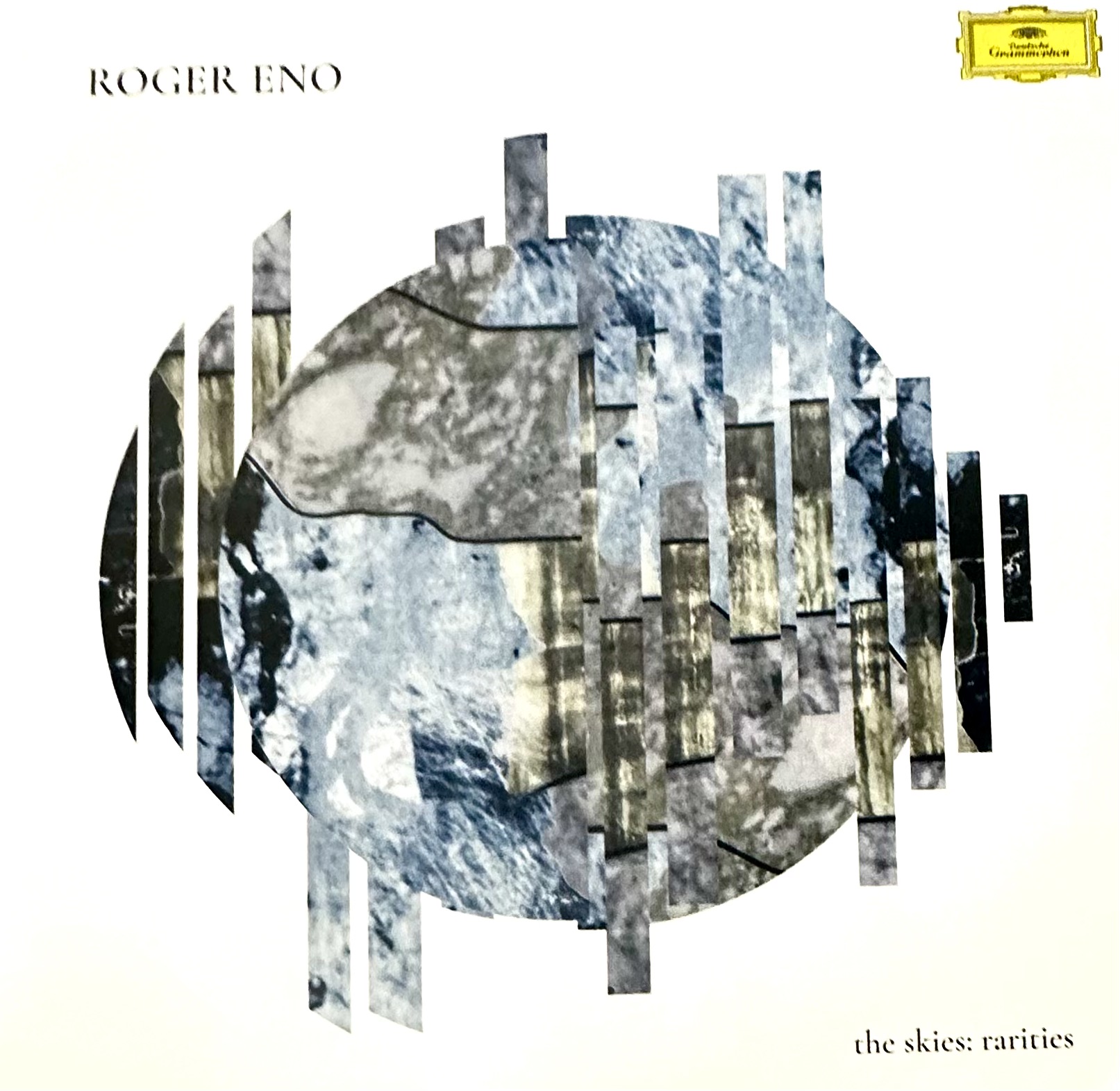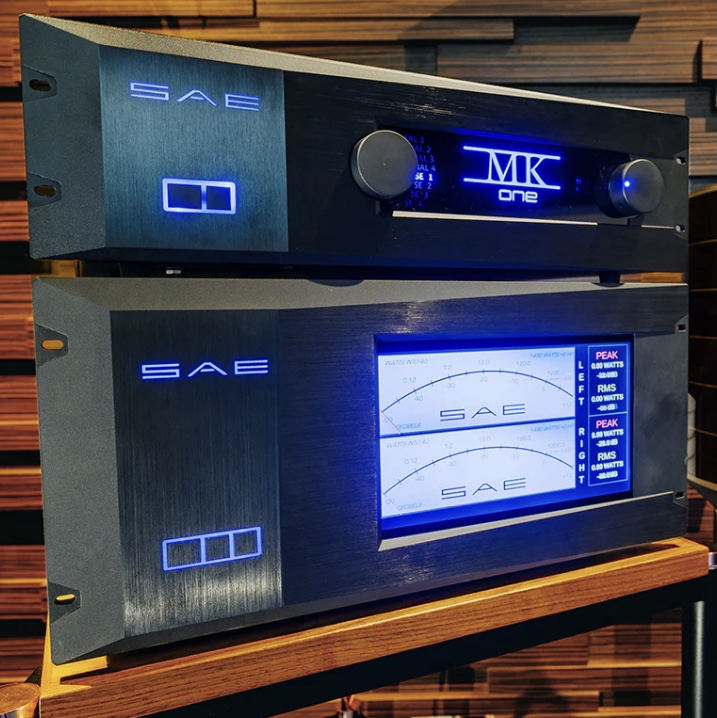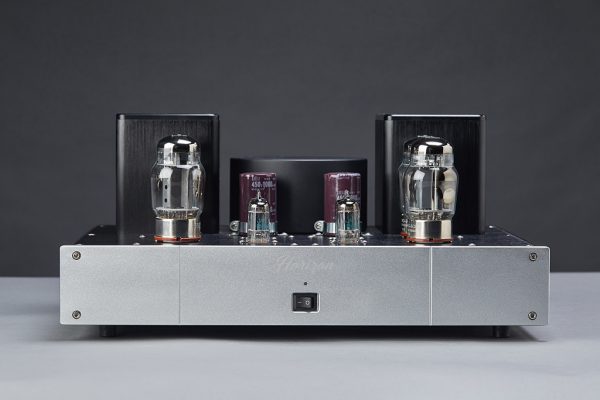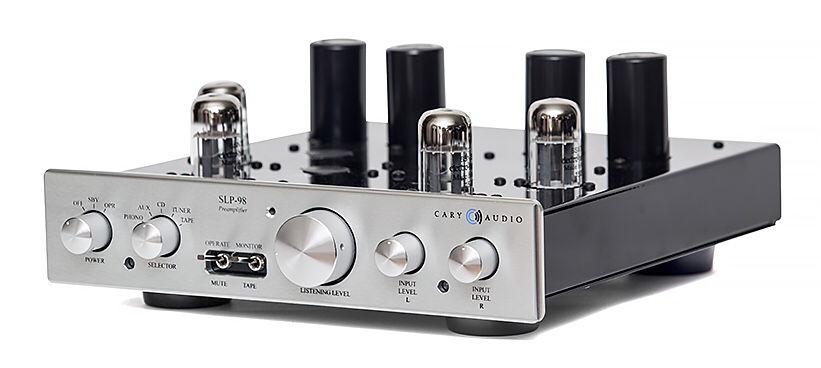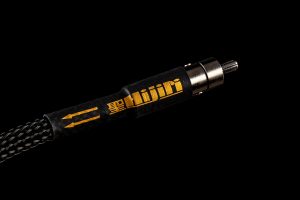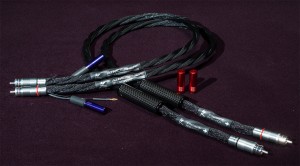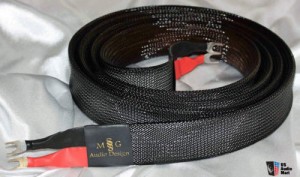
TiGLON is not a household name here in the states but if Phillip Holmes has anything to say about it they will be before long. Phillip is the principle and owner of Mockingbird Distribution LLC who are the importers for TiGLON, Jasmine, Abis, Zorin, Jakutus, Mockingbird Speakers, Pyon and a few other items just for good measure. The members of Mockingbird Distribution LLC have extensive backgrounds in marketing, sales, customer service, shipping, manufacturing and project management. The primary mission and focus of Mockingbird is helping manufacturers, dealers and customers.
Phillip comes from a musical family. He graduated with a Bachelor of Arts in music, with a minor in operations management. He started modifying and repairing antique electronics in high school, and has learned the fundamentals of analog electronics as a result. His extensive experience in manufacturing and ISO procedures makes him an ideal partner for continuous improvement and total quality. His experience in manufacturing, as well as relationships with electrical engineers and specialty manufacturers, makes him an ideal partner for struggling upstarts looking to improve their products, marketing and sales. I truly believe that it is the upstart companies like Mockingbird and the people driving them, like Phillip, are a strong indicator as to where the future of the industry is headed. Smaller and more efficient operations that flex considerable skills and experience to continually come up with and bring to the market innovative designs at prices that are a bit more manageable to the average audiophile.
I cannot think of anything more difficult than reviewing audio cables. Having said that cables are probably the easiest things in the chain of sound reproduction to actually handle. They are small, relatively lightweight and somewhat uniform in design and dimensions (caveat: "somewhat"). After that it becomes increasingly difficult to talk about the differences because, sans reviewing two sets $25k apart in pricing, the differences can be so subtle as to be incredibly difficult t put into words without sounding pompous and snooty.
I have listened to cables that cost $1000 a linear foot next to cables costing $150 a linear foot and been struck most by how similar they sound and not by how different they sound. I have also listened at times to inexpensive cables that simply, at least to my ears, so outperformed a far more expensive set that it made me wonder if it was all just snake oil and marketing. There has to be much more than voodoo and magic, much more than hype and snake oil to justify some of the costs that I have seen. That is not meant to disparage really expensive cabling as being unworthy of the cost. That would be irresponsible and utterly stupid. What I am saying is that at times something's price just makes you wonder what is driving the cost.
Recently I set up a system for a friend of mine who is a doctor and offers a cycling training program at his facility. He was aghast at the speaker cables not only from the size but the cost. He asked that I replace them with something much cheaper as a way of thwarting potential theft. I went home and brought back some OFC zip line speaker wire from the archives and used it. He instantly heard a difference but was still worried about theft over quality of sound.
What was strange to me is it was quite obvious how far cable has come and the need for some in between cables that offer truly great sound (cables shouldn't really offer sound but rather the simple movement of the signal without adding or taking anything away) and value for the money. I think this is where I found myself going with the cables that are the subject of this review. Of course there is no one best cable, anymore than there is one best amplifier, speaker or other component. There are however a number of good value choices at every price point and the TiGLON Magnesium cables represent one of those choices.
There has always been opposing sides of the cable argument with those saying that thick, highly engineered unobtanium and cantaffordium cables sound the best. Others say there is no difference between inexpensive wire and the more costly permutations. Me? Well I seem to fall somewhere in between those camps. An 18 or 24 gauge wire was fine for my first decent system in my college dorm but very quickly I found a big improvement out of the first generations of Monster cables.
For quite some time now Oxygen Free copper or Silver have been the standard for cable materials coupled with other shielding to reduce EMI/RFI and other interferences in the signal chain. Now TiGLON enters the market with magnesium cables! Why? Well I will let the manufacturer speak to that:
"Magnesium is singular in offering an outstanding combination of vibration absorption, mechanical rigidity and electromagnetic shielding. The properties of magnesium have been proven over the years, through use in aerospace, auto racing, and for audio in head shells and tone arms. TiGLON takes this material full circle by applications in cable shielding and damping, and through its highly advanced application to audio equipment racks. TiGLON has developed a magnesium foil having excellent audio characteristics: An ideal shielding layer which dampens external vibration and blocks external EMI/RFI radiation. While competing products experiment with new "secret advancements" and "special geometries", TiGLON brings the power of metallurgy and magnetism to produce cables of uncommonly low noise-floor, and a relaxed presentation heard in very few cables before them."
In essence, according to the manufacturer the real important and applicable characteristics of Magnesium:
"Excels beyond all other practical metals in vibration absorption, electromagnetic shielding, and heat radiation characteristics. TiGLON cable is shielded with magnesium foil tape wound spirally
from an IN to OUT direction. The shield layer (foil) is electrically insulated from IN end terminal furthermore electrically connected to cold terminal on OUT end. The effects are eliminates the influences of external noise invading through cable. Magnesium boasts almost no resonance inherent sound (resonance elements), free from metallic sound."
"The interconnects use 500 ultra fine, soft conductors only 50 microns thick. These are stranded into a singular conductor of which there are two. Terminated with magnesium RCA connectors in the case of the MGL-R1 there is also the use of a magnesium filter to choke of noise and vibration. TiGLON leverages magnesium to produce a cable of exceptional transparency and low noise.

The MGL-SP1 speaker cable is a high quality cable with improved resolution and signal-to-noise ratio, based on the standard model MS-12SP. The magnesium shield was changed to the next-generation "100M magnesium shield". For best sound, a special fire rated PVC jacket is used, which has proven itself to be superior sounding to normally rated PVC material, while also being more durable. The MGL-SP1 is cut-to-length, and does not come with spades or bananas. Rather it is supplied raw, normally with the ends "tinned" with solder to prevent unraveling."
So there we have the usual manufacturer info. And that brings us to the issue once again how did they sound?
Yes how did they sound? Well they didn't. In a nutshell they didn't sound at all. That is actually a very good thing. I simply have to say that when they replaced other cables in my system that I had been using (and that is a very long list as of the last year) they did not add anything noticeable nor did they seem to remove anything either. They simply did what a good cable is supposed to do. Get out of the way of the electronic signal and simply transfer that info to the rest of the system.
So how did I introduce them? Well over the years I have established a protocol for introducing new cables into the mix. If it is more than one type as is the case here I introduce the interconnects I pair at a time and then the speaker cables followed by power chords. Such was the case here. Regardless of how burned in a manufacturer tells me the cables are I let them run for between 50-100 hours just to satisfy myself. I will usually run them in my secondary system for the burn in before injecting them into my main system.

Interconnects were the first injection. The one thing I did notice with the TiGLON magnesium immediately was to the blackness of the background. The single best test track I have for this is "Dogs" from Roger Water's live album Live in the Flesh. There are two things that I always notice about cabling when playing this track and that is how much background noise is allowed to run through during the intermediate part of the song with the dogs barking. The best cables keep this particular passage exceptionally quiet with the exception of the ambient crown noise (fairly easy to pick out) and the barking dogs. This is usually manifested in the dogs seemingly barking outside my house behind and to the right of my listening position. If I sense that it is Ruby, the boxer/mastiff next door, it means that the cables have done their job. Nothing added allows that effect to come through with startling clarity and realism. That is not always the case with every cable I sample. With the TiGLON the presentation has only been matched by three other cables I have reviewed. If the effect is at this level it brings a huge smile to my face. The very first time I experienced this I was rather deep into a bottle of exquisite anejo tequila and not particularly doing any critical listening and I jumped up to go out and tell the dog to pipe down! I got outside and could tell Ruby wasn't even in the yard let alone barking. I went back and replayed the passage and lo and behold there was that magical effect. Since then I always use that passage to measure that one point. During my time listening with these interconnects, I began to realize how incredibly neutral they were. I also believe the manufacturers claim of noiseless background because that is what I have experienced.
Of course when we are talking about $1000 for a single meter you should expect a high level of performance. Not that this is the most expensive cable out there but it is not the cheapest either. Anytime you throw down $1000 these days you most certainly have the right to expect a high level of performance. I think I can honestly say without any reservation that the TiGLON delivers on the expectation. The TiGLONs were simply neutral, ninja quiet and completely and totally out of the way of the music delivery. There was also a noticeable; I'll call it augmentation for lack of a better description, of the higher frequency. Not that it boosted the signal in the 10kHz and above but rather it seemed to come through with more clarity and presence than even my reference cables. Not pronounced in a startling way or in a distractive sort of way but just more there. On James Brown's "Super Bad" from the Best of James BrownCD, arguably not an audiophile recording by any stretch, there are two points in which he actually squeals. I have never heard a man squeal in the way he does on this track. That being said it can and often is almost shrill and slightly painful to hear. With the TiGLON interconnects when it came to that point in the track, for the first time ever I didn't flinch! I chalked it up initially to not listening critically to the song (I mean it isn't a reference song) but just passively listening. I decided to sit down and actually listen to the entire track in a more focused way. Again when it came to the squeals they were as shrill as ever and I found myself asking for the millionth time, "How does he do that?" Again the chalk on the fingerboard nature of that vocalization was absolutely absent. I can only conclude that whatever it is about the properties of magnesium shielding this is one area where they pay off in dividends. Got my vote!
Next I decided to place the speaker cables into service. The cables came in 2.5 meter length which is perfect for my setup. The cables come without terminations. They wires are simply soldered at the ends.
The TiGLON MGL-SP1 is actually the second tier speaker cable in the TiGLON line. As such it represents one of the best bargains I have experienced in a speaker cable in quite awhile. In the 2.5 meter length supplied to me the cost is a mere $525. Adding WBT terminations would still allow you to have an awesome set of speaker cables for under $1000! In this day and age that is still a real and true bargain for an audiophile grade speaker cable.
Once in the system and burned in the speaker cables did not change the overall sound at all. Mind you they replaced a set of $3000 speaker cables. I ran them with and without terminated ends and quite honestly could not tell a bit of difference. I am sure I will be flamed for that statement but it is true.
The actual combination of the interconnects and speaker cables worked in a very harmonious fashion and neither player detracted from the other. I happened to be listening to Van Morrison's "Into the Mystic" from the Moondance LP (Warner Brothers AWAR 1835) pressed on 180 gram vinyl. This is without a doubt my favorite Van Morrison recording (interesting side note, it was Morrison's "Gloria" recorded with the band Them that was the first rock song I learned to play on the guitar!) I will listen over and over to that song and never get bored with any aspect of it. The best thing I can say about this combo of cables was that I was totally relaxed and simply forgot to listen "Critically" and just melted away into the music! Is there anything else to say about the experience with any gear that could be finer praise or put more succinctly about the experience? I do not want to wrestle for flamboyant words or equate the experience to and ephemeral out of body experience where I travelled to a crab nebula 40,000 light years from home. That would simply be disingenuous! I simply got so caught up in the music that I forgot for that rare instant that I was a reviewer and doing a job. For that track after the first 15 seconds I was simply a guy, at home, listening to his stereo and floating along where the musical imagery took me! I honestly cannot think any higher praise than that! The cables disappear into the music and that is EXACTLY what they are supposed to do.
.jpg)
I was also supplied with a power chord in the form of the MGL-A1 in 1.8 meter length. This item sells for $1100. It is very hard to asses a single power chord in a system like mine where there are so many components. What I did end up doing was introducing the power cord and the interconnects into my Wadia iDeck, Grant Fidelity headphone system. First the interconnects and I have to say wow! I have never really been picky about the headphone system beyond the headphones (Grado) themselves. I was using a digital cable in between the iDeck and the Grant tube headphone unit. So I listened for approximately thirty minutes to a number of very familiar tracks. It was then that I switched out the digital cable for the pair of TiGLON interconnects. Yikes! That whole digital cable thing has been a mistake. While the cables themselves were more expensive than the source components combined it instantly transformed the whole experience to a much more immediate, and eye opening audiophile event. Now the idea of adding another $1100 into the mix in the way of a power chord seemed to me to be downright stupid. Let's see here, $350 iPod deck, $450 for the headphone amp, $400 for the headphones comes to a tidy $1200 total. One set of interconnects and one power chord $2100! Not so sure.
I placed the power chord into service on the Grant unit as the Wadia comes with a specific wall wart power supply. I pulled the headphones on and cranked her up! Holy S*&%! If I was an apartment dweller or a HiFi fan in a dorm or perhaps moved into the new wave tiny houses I see sprouting up all over the place this is a system I could live with for the rest of my life. (Sub 800 square foot homes are looking more and more attractive to Paula and me every day). I was just stunned at the fluidity of the presentation and the dark, endless night in between passages couple with the incredibly detailed presentation that I could barely find words for how monumentally transformative those cables were. So much for the notion that expensive cables are just all marketing hype!
In a nutshell these cables represent a very strong value in today's market where cables can cost upwards of $25,000 a pair. Yep a pair of audio cables for the cost of a brand spanking new VW Jetta or Golf! If you are of the normal, average garden variety audiophile who is trying to achieve that champagne experience of a Pabst Blue Ribbon budget then you owe it to yourself to experience TiGLON cables. Plus on the value added side you will find Phillip Holmes to be the consummate audiophile and die hard analog guy. He is always willing and eager to help other audiophiles and besides you can buy the TiGLONs and splurge for a new car on top of it!
TiGLON MGL-R1 Interconnect
Retail: 1 meter $1000
TiGLON MGL-SP1 Speaker Cable
Retail: 2.5 meter $525 un-terminated
TiGLON MGL-A1 Power cord
Retail: 2.8 meter $1100
Mockingbird Distribution LLC
214.668.2509
www.mockingbirddistribution.com
A Note From the Manufacturer
The MGL-R1 has ceased production in Japan, being replaced by the MGL-R10, using Hitachi HiFC for its conductor. All conductors in TiGlon products are either oxygen free copper or Hitachi HiFC. Magnesium is strictly applied to shielding and RCA collets.




